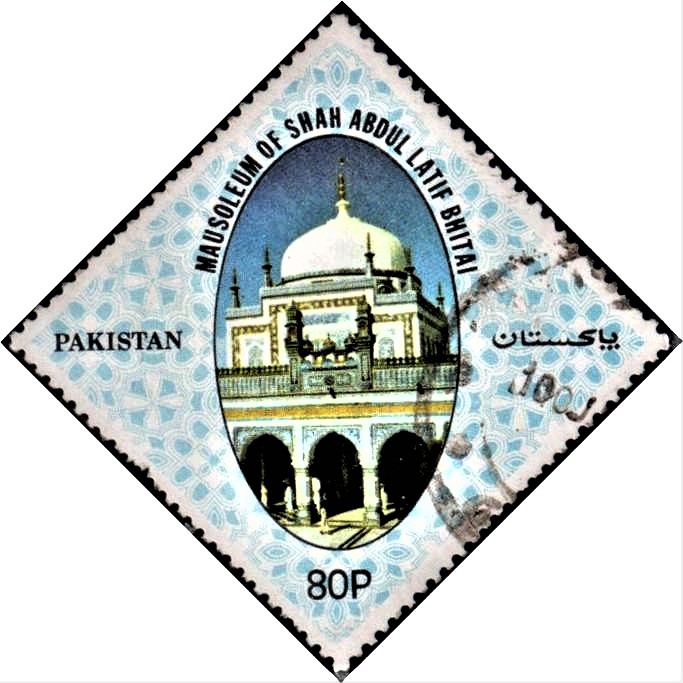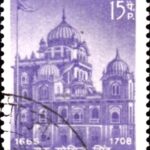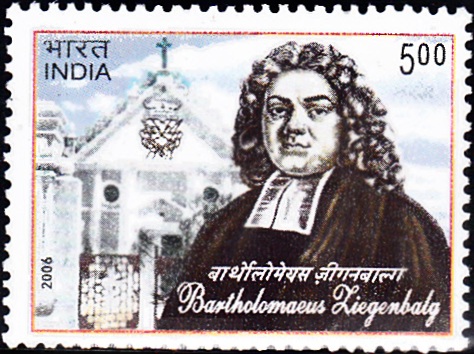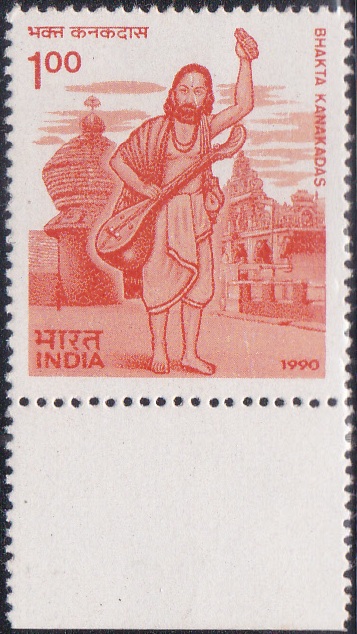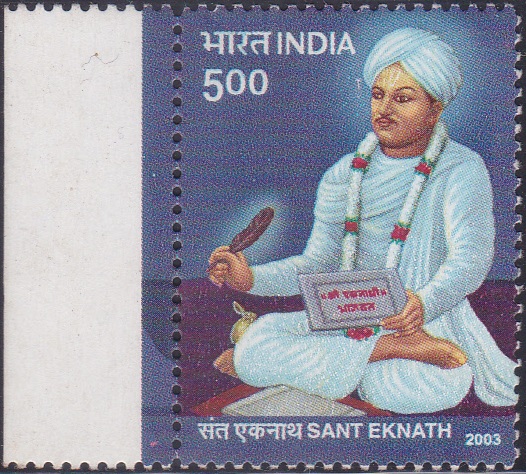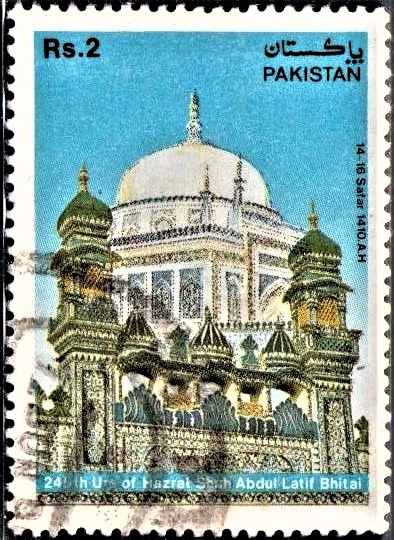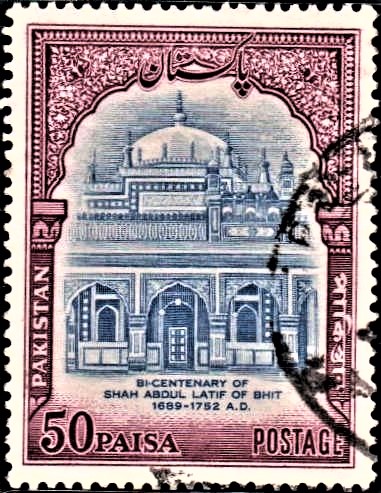
Shah Abdul Latif of Bhit
A commemorative postage stamp on the Mausoleum of Shah Abdul Latif :
 Issued by Pakistan
Issued by Pakistan
Issued on Jun 25, 1964
Design : Mausoleum of “Shah Abdul Latif of Bhit” with the words “Bi-Centenary of Shah Abdul Latif of Bhit – 1689-1752 A.D.”
Type : Stamp, Postal Used
Denomination : 50 Paisa
Colour :
Border – Red
Vignette – Blue
Quantity Printed : 5,00,000
Printers : The Pakistan Security Printing Corporation Ltd., Karachi
Name : Shah Abdul Latif Bhittai
Born on Nov 18, 1689 at Hala, Sindh, Pakistan
Died on Jan 1, 1752 at Bhit, Pakistan
About :
- In a typical village of the former province of Sind, known as Hala Haveli in the district of Hyderabad, Shah Abdul Latif was born in 1689 A.D. By birth, he belonged to respectable parents of well-known and religiously esteemed Jararpota Sayyed family of Sind which is also enjoyed a traditional reputation for learning and poetry.
- Young Latif was entrusted to a teacher by his father Shah Habib. The contents of his poetry conclusively prove that he must have received good average education of his times which included study of Quran and partly of Persian and Arabic languages and Theology. But Shah Abdul Latif was endowed with a brilliant mind which overshadowed his formal education. In quest of truth, he travelled throughout Sind and also visited the neighbouring territories of Multan, Jesalmer, Kachh, Kathiawar, Lasbela and parts of Makran in Baluchistan. During these travels he came in contact with all sections of the people, the poor villagers, artisans, farmers, the sons of the desert in the South-East of Sind, and the mountaineers in its West, and discovered the people of Sind, their life and traditions, their worries and sorrows, their hopes and aspirations. His travels also enabled him to explore the religious truth. Belonging to a pious Muslim family, he wanted to explore also the spiritual side of other religions particularly Hinduism. He, therefore, associated himself with the Sadhus of the various Hindu sects. He is said to have accompanied some of them to their places of pilgrimage like the Ganja Mount in Sind, Mount Girnar in Kathiawar, and Nani in Makran. Through these close personal contacts with the spiritual leaders of the Hindu sects outside and the Muslim religious leaders at home, he saw that the emphasis was more on the ‘ceremonials’ rather than on the ‘essence’ which according to him consisted in ‘Love of the Creator and the fellow human beings’. He retired to lonely prayers and long solitude to explore the religious truth through personal experience into the higher spiritual realms. From these, he emerged imbued with love of God and fellow human beings. He had now to impart to others what he had learnt from his social and spiritual experience. This he did through his verses which eventually reached every hut and hamlet in the country. He built a new abode for himself and his associates on a Sand-hill called Bhit in Sindhi, and became known to the people all around as ‘Bhitai‘ i.e. Belonging to Bhit.
- Politically also, the years of his life marked the turning point in the history of the Indo–Pakistan subcontinent and also that of Sind. By the time he was 18 years old, Emperor Aurangzeb Alamgir died in 1707 and his death marked the disintegration of the Moghul Empire and Sind which was a part of the Moghul Dominions now gained independence under the dynastic rule of the Kalhoras, who, through their religious leadership and influence now gained the temporal power. When Latif was about 50 years old, Nadirshah sacked and devastated Delhi and also over-ran Sind. By the time the poet was 58, Ahmad Shah Abdali invaded India and annexed Sind. Shah Abdul Latif who had already been moved by the pitiful condition of the masses now further attached himself to the common-folk whose ideals and ways of life he proceeded to advise and uphold through his immortal verses.
- His father Shah Habib died in 1742 A.D. After this year Shah Abdul Latif was the sole head of his house but more to as a reverend ‘Saint of Bhit‘, aged 53. For the next 10 years Bhit became the reverend sanctuary of the Saint and his associates, the residence of the faqirs, and the place of pilgrimage for his followers. During this period, Shah Abdul Latif, in all probability composed the bulk of his poems containing his social and spiritual message. He died in 1752 A.D. but the echo of his sweet melodies from Bhit resounded all over Sind and endeared the soul-touching verses of the poet to all sections of the people, the Muslim and the Hindu, the humble and the great alike.
- With the compliments of the Director-General, Pakistan Post Office, Karachi.
Subscribe
Login
0 Comments


